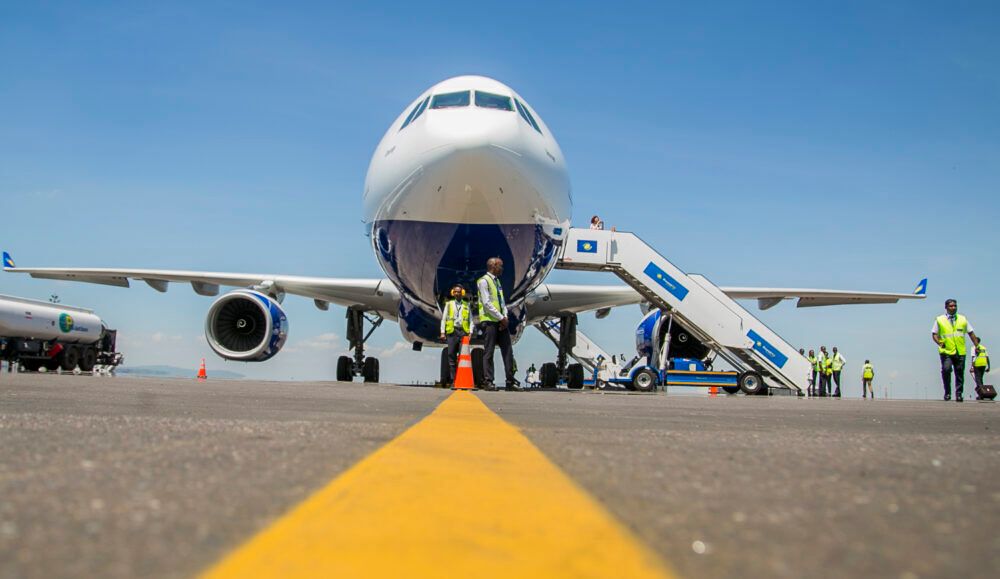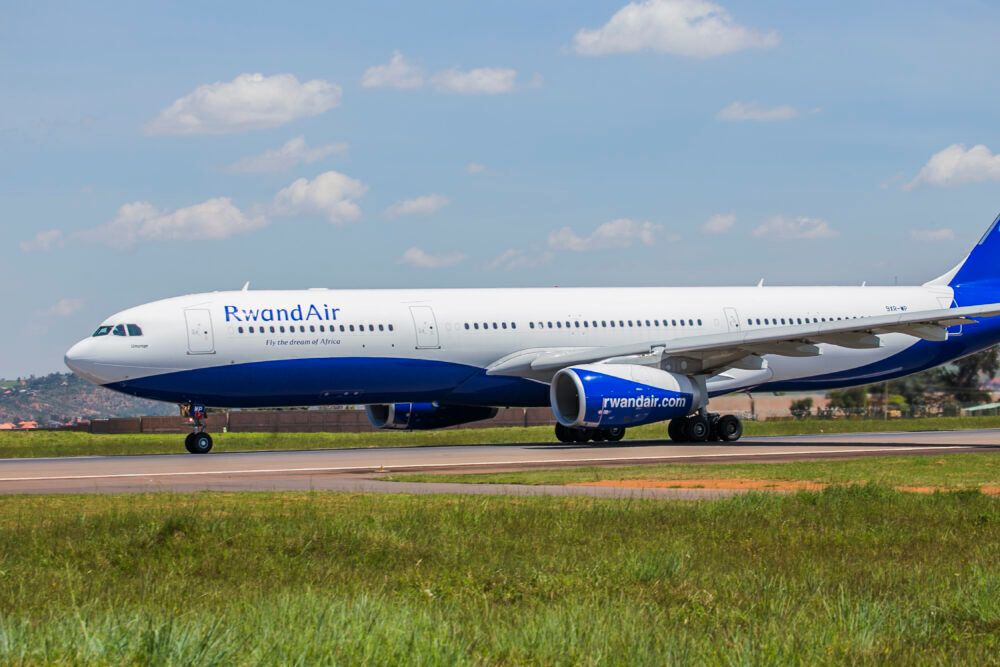Despite the challenging times it has faced in the past 18 months, Rwandair is holding on tight to its ambitions for growth. The airline’s CEO, Yvonne Manzi Makolo, stated that its five-year plan sees a doubling of the fleet size by 2026, depending on how the market evolves.
Rwandair sets its sights on growth
Rwandair is an airline that is full of strong potential. With a strategically located hub at Kigali and the backing of deep-pocketed Middle Eastern airline Qatar, it came into 2020 looking like a carrier that was set for exponential growth. But the pandemic put pay to any immediate plans of expansion, leaving it with a modest fleet of just 11 planes.
Nevertheless, the airline is holding tight to its longer-term ambitions. Speaking at today’s CAPA Live event, CEO Yvonne Manzi Makolo stated that growth is still very much on the cards,
“We're looking at increasing it [the fleet]. As I mentioned right now, our focus is on surviving this whole mess. So we’re leaving it as it is for now but in the coming years, we will be expanding.”
In fact, the airline is keen to expand in a big way, with its sights set on doubling its fleet within the next five years. Makolo explained,
“We're looking at a five year plan. And we are looking at increasing our fleets, close to doubling our fleet, in the next five years, but again, that's based on what's happening. We have to relook at the plans as things unfold. It’s pretty difficult to plan right now, but that's the current plan but we have been constantly revisiting it based on what's happening in the market.”
Rwandair’s present fleet 9is a mixed bag, consisting of 11 aircraft across four families. It flies two A330s, a -200 and a -300, five 737 NGs, two CRJs and a couple of Dash 8s. If it is to grow in a measured way, this fleet needs to remain simplified, which would suggest it could stick to Boeing for narrowbody and Airbus for widebody requirements in the future. However, with its MAX commitments canceled, this could all change in the future.
Stay informed: Sign up for our daily and weekly aviation news digests.
Europe remains key
While Rwandair has restarted the majority of its African routes, other markets remain challenging for it to serve. Europe, with its ever-changing restrictions and difficult to navigate requirements, has not been an easy region. Nevertheless, the CEO remains committed to Europe as a strong market for Rwandair in the future. She said,
“Europe is a very good market for us. It was before the pandemic and its continued to be a key market for us.”
Due to travel restrictions, Rwandair’s highly anticipated launch to London has been operating so far as a cargo-only service. The CEO noted that this has been vital to supporting the economy of Rwanda, particularly the horticultural industry, for which export is crucially important.
Going forward, the airline will keep Europe in its sights as the fleet expands. Makolo explained,
“We currently operate to Brussels and London. Brussels, because a lot of the African diaspora live in Brussels, and London is a key market for us, not only for exports but also for tourism. The UK I believe is number two in terms of tourism to Rwanda, but also in terms of connectivity beyond London, especially to the US and Canada, which is where a lot of African diaspora live as well.
“So Europe will continue to be a key market for us. Once things stabilize, we currently tag the London to Brussels, we will probably untag that and add more frequencies to the European market.”
While Europe is well on the radar of this growing airline, it has not forgotten the importance of intra-African connectivity too. The CEO noted how important it is for airlines to work together on the path to recovery, particularly within Africa. She further explained how partnerships are key, saying that she is keen to forge new collaborations to increase the footprint of the airline, not only within Africa but also beyond.



